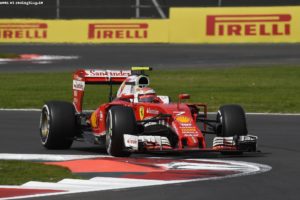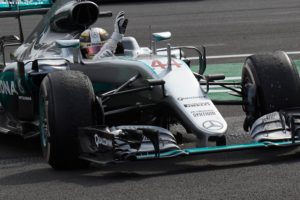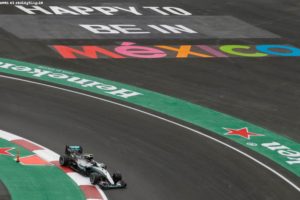Mexico was a strange race for many reasons and doing well was all about taking care not to fall into the trap of believing your own assumptions.
 Year two in a new venue, there were some assumptions from last year that needed to be debunked. There were 21 overtakes last year. But the reality was that most of those overtakes happened because teams had underestimated the braking requirements at altitude and this year were more prepared, so overtaking was really difficult. And that meant no chance of doing the fastest strategy for teams starting outside the top ten. Then there were assumptions about the medium tyres and how long they would last in the race. In fact they performed more like the Bridgestone tyres of 2010, with almost no degradation, so a car could do almost the whole race on them. Misreading that cost several teams big results. And the final assumption that needed to be ignored was the driver reporting that the tyres were ‘finished’. In most cases they were not and teams needed to tell drivers to be quiet and get on with it. Those who did that succeeded, as we shall see.
Year two in a new venue, there were some assumptions from last year that needed to be debunked. There were 21 overtakes last year. But the reality was that most of those overtakes happened because teams had underestimated the braking requirements at altitude and this year were more prepared, so overtaking was really difficult. And that meant no chance of doing the fastest strategy for teams starting outside the top ten. Then there were assumptions about the medium tyres and how long they would last in the race. In fact they performed more like the Bridgestone tyres of 2010, with almost no degradation, so a car could do almost the whole race on them. Misreading that cost several teams big results. And the final assumption that needed to be ignored was the driver reporting that the tyres were ‘finished’. In most cases they were not and teams needed to tell drivers to be quiet and get on with it. Those who did that succeeded, as we shall see.
Pre-event considerations
Pirelli brought the same medium and soft compound tyres as last year, but added in the supersoft to try to make the strategies more interesting. The supersoft was the qualifying tyre for most teams, except Mercedes and Ferrari that went with soft.
As last year, teams knew that this was likely to be a one stop race, with 50 of the 71 laps of the race feasible, especially for the midfield and slower cars. The earlier you pitted in the race to get onto the mediums, the better off you were. However the faster cars that load up the tyres more, needed to be a little more careful, as Daniel Ricciardo’s experience in the race showed; he ran out of tyre performance around 45 laps into his stint on mediums and pitted again for new softs.
Red Bull tries a pincer move and Ferrari listens to its driver
 At the front of the race, Mercedes looked like they had things under control, but the reality was that on Lewis Hamilton’s car there was a delicate balancing act to perform. He had badly flat spotted a front tyre with a lock up into Turn 1 at the start and the challenge was to get him far enough into the race to be able to make just one stop, without running the risk of damaging or breaking the suspension in the meantime with the vibrations. So to get to Lap 18 was the earliest they could stop him.
At the front of the race, Mercedes looked like they had things under control, but the reality was that on Lewis Hamilton’s car there was a delicate balancing act to perform. He had badly flat spotted a front tyre with a lock up into Turn 1 at the start and the challenge was to get him far enough into the race to be able to make just one stop, without running the risk of damaging or breaking the suspension in the meantime with the vibrations. So to get to Lap 18 was the earliest they could stop him.
At this point Nico Rosberg in second place had just 22 seconds gap back to Daniel Ricciardo, who had already pitted on Lap one after the Virtual Safety Car and then Safety Car were deployed. Red Bull were trying a pincer move on Rosberg with two different strategies. So it looked quite tight for him to retain that position. But in fact he was managing his pace and was able to keep Ricciardo at arms’ length and retain position when he stopped three laps later.
Red Bull had gone aggressive with the supersoft tyres again for the start, hoping to get ahead of Mercedes off the line. This is the second race in a row they tried it and while in Austin it won them a position, in Mexico it did not. The decision to start with supersofts was more because they knew Mercedes had to be more conservative, as they have more to lose with both drivers in the title fight.
Sebastian Vettel meanwhile was racing hard to make up for a disappointing qualifying, which had seen him fall behind both Red Bulls and his Ferrari team mate Kimi Raikkonen. Vettel’s strategy was to run a long first stint on the soft tyres and then have a tyre offset for the end of the race. In fact the performance difference in the final laps for a tyre that is ten laps fresher than another car’s is only around 4/10ths of a second, which is not enough to promote an overtake.
Some have argued that Ferrari’s decision to pit Kimi Raikkonen a second time, later in the race, was in order to clear the way for Vettel to get through. In fact it was not that cynical, quite the reverse; they were guilty of believing their driver when he said that the medium tyres were losing performance and asked for a new set. Ferrari’s mistake was to bring him into the pits, even if he did manage to pass Hulkenberg at the end on fresher tyres.
It turns out that quite a few team strategists had the same message from their drivers, that the medium tyres were not going to last – and most told them to be quiet and get on with it. They knew and the data backed them up, that the tyres had plenty of life and almost no degradation.
Perez angry that his strategy was too conservative
It was hard not to feel sorry for Mexican home hero Sergio Perez, who spent the entire race stuck behind a Williams. He had not got the job done in qualifying, unlike his team mate Hulkenberg who was outstanding in fifth ahead of the Ferraris.
But Force India did not believe that the medium would last to the end of the race from Lap 14, which is when Felipe Massa made his stop. Valtteri Bottas came in on Lap 19 and it was then Force India made their mistake, by pitting a lap later. This condemned Perez to sitting behind the Williams cars.
 The problem was that they could not see Perez’ true pace in the opening stint as he was behind the Williams and the calculation was not about doing the fastest strategy for the tyre sets he was using. In this strange race that was like a throwback to the Bridgestone era of minimal tyre degradation, it was all about track position. Remember Abu Dhabi 2010 when Fernando Alonso lost the world championship because he came out of the pits behind cars that had pitted on lap one? This was that kind of race. And it’s quite useful to reflect on whether that makes for better racing.
The problem was that they could not see Perez’ true pace in the opening stint as he was behind the Williams and the calculation was not about doing the fastest strategy for the tyre sets he was using. In this strange race that was like a throwback to the Bridgestone era of minimal tyre degradation, it was all about track position. Remember Abu Dhabi 2010 when Fernando Alonso lost the world championship because he came out of the pits behind cars that had pitted on lap one? This was that kind of race. And it’s quite useful to reflect on whether that makes for better racing.
If they had pitted earlier, as Perez said afterwards they should have done, they might have got the Williams cars. But for sure once Massa pitted on Lap 14 the smart tactic was the opposite; Perez had started on soft so he should have emulated Vettel and run as long as possible on the first set of tyres, even if he was giving away a few tenths per lap to the Williams.
What that would have allowed him to do would be to put pressure on Williams later in the race and drive Massa into a position where he would have to push his worn tyres and get them to drop off a performance cliff. Stopping right after Williams just made life comfortable for the Williams drivers and frustrating for Perez.
Ericsson a candidate for Driver of the Day?
Sauber desperately needs to score a point in the F1 Constructors’ Championship and Marcus Ericsson came very close in Mexico with a bold strategy that saw him start on the soft tyre, switch to the medium on Lap 1 and then run to the finish on that tyre. This strategy relied on the fact that in the midfield, the pace differences between cars were minimized by the traffic and the difficulty of overtaking.
So you were not choosing a strategy and tyre sets based on your fastest race, as at most F1 venues, but rather on the fact that if you got track position on tyres with ultra low degradation, no-one coming through from behind was going to be lapping much quicker than you. This was how a Sauber managed to finish ahead of two McLarens, two Toro Rossos, two Renaults and two Haas cars. It was a good drive from the often-maligned Ericsson.


